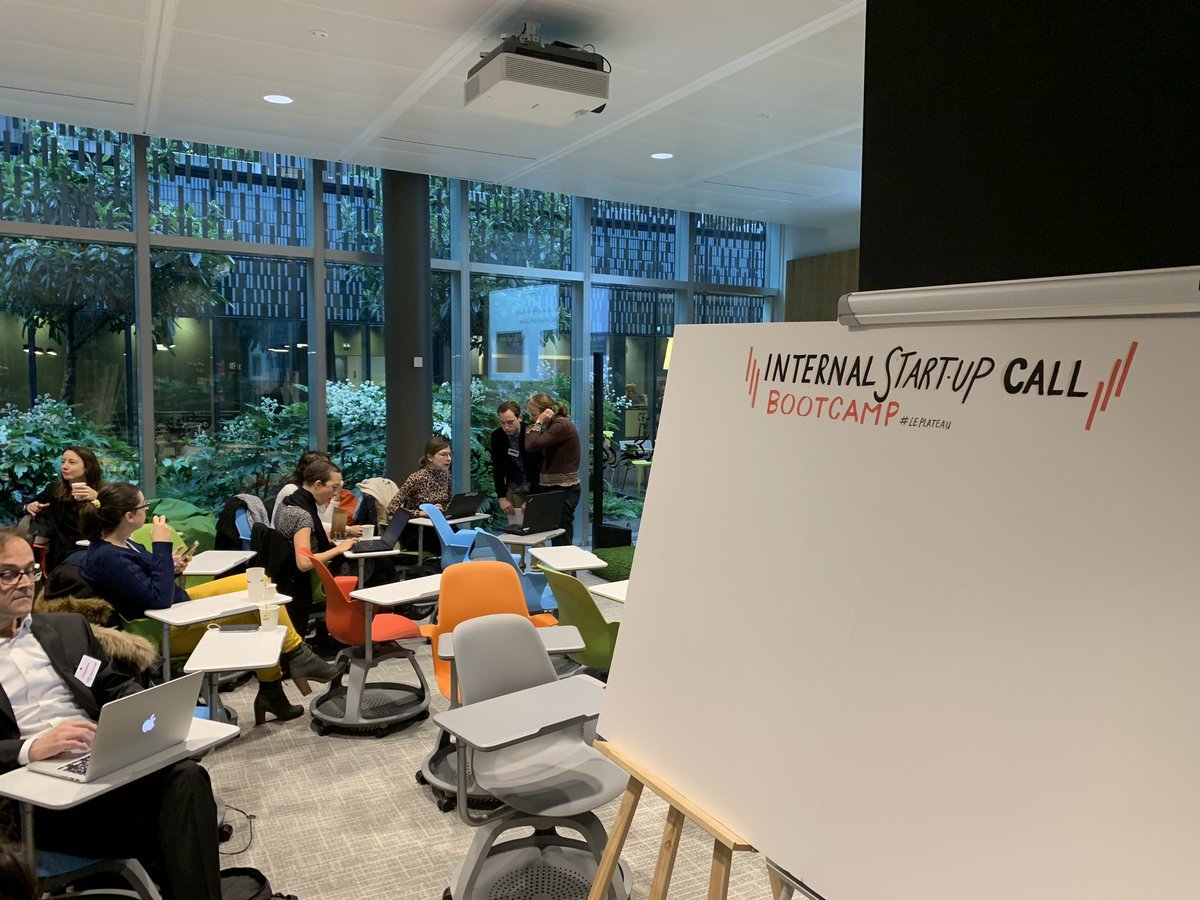100% success rate in Innovation: reaching the next level of value creation
When it comes to innovation and intrapreneurship, what first comes to our mind are usually the tasks related to project management, portfolio review or proof of concept. This is all very fine and well. Yet something is missing: the one thing that most big companies often neglect but could boost the level of success of their intrapreneurial projects.
If you count the number of innovation subjects currently in your portfolio, you will see a certain number of projects:
that will never be launched because they do not fit with the company's current concerns;
that will be stopped because they require unavailable expertise or competencies or because their expected business value is too low;
that will be killed because of resources, political or other organizational issues;
and finally, that will eventually get to the market, but never meet the expected success.
With any luck, you look at a 17% success rate and wonder how to unleash the power of the remaining 83%. One thing is for sure, you are not developing the full potential of your innovation portfolio.
An approach applied to one of the Fortune Global 500’s biggest innovation projects
The key to that 83% is thecapabilities - the specific resources, skills or competencies that a company develops over time as a form of competitive advantage. These capabilities aim at maximizing the potential value generated during the course of the projects, be it success or failure. Having followed this insight, we have applied this understanding in the mission with Société Générale in the program Internal Startup Call (ISC), where we have implemented several mechanisms to maximize the value generated, beyond business potential.
These mechanisms have been applied to over 60 startups of this program - the biggest Intrapreneurship program in France in 2018. The goal of the ISC program was to reduce the innovation time-to-market by challenging the internal organizational limits of the Group. The goal is also to create an entrepreneurial DNA within Société Générale, by encouraging its collaborators to explore new ideas and adopt an entrepreneurial mindset. Along the program, through the discussions with the executive committee, we realized that all the new knowledge, competencies and mindset that the startups were building over 6 months had a major impact. It is not just about the business potential of these startups – whether they are stopped or kept on – these new competencies or capabilities are valuable to the Group.
It is worth noting that very few innovation programs are actually managed and designed that way. It is more common that when launching such a program, we start with the belief that a company has to innovate, then mimic the other companies who succeed in certain ways and put our best effort and resources into it. Truth be told, it is not that simple.
Capabilities extracted from Internal Startup Call
First things first, it is important to tell the difference between capabilities and assets. An asset can be a product, service, or tool that is
readily available and
can be exploited and used at any time in its current state.
As opposed to this, we define a capability as the pre-form of an asset. A capability is an asset in the making, something that can be further developed to become more valuable for the company.
| “Competencies and capabilities are intriguing assets as they typically must be built because they cannot be bought.” - Teece
To identify the capabilities created by the startups at Société Générale, we used a typology adapted from Keil, McGrath and Tukiainen. A capability was thus defined as one of the following:
Personal skills – including expertise, skills and leadership. Among the intrapreneurs of the ISC, we thus identified those that stood out for their understanding of certain topics and could bring new knowledge and point of view to colleagues in the company;
Team – the ability to work well and efficiently together, including the ability to deal with challenging issues, determine a clear goal or establish trust in the team. Some ISC teams were indeed stronger in teamwork, and this had a quite direct impact on their productivity;
Technology – new technological building bricks and competencies. For example, some ISC intrapreneurs developed algorithms analyzing such complex subjects as CSR or legal cases, which are scalable to other applications of Société Générale;
Concept – models, prototypes and demos. For example, a start-up that created a teaching platform can use the Netflix recommendation model to guide the employees through training, by matching his/her personal learning goals - just as a Netflix user has suggestions that fit his/her preferences;
Strategy – analysis conducted to evaluate a market, or decision tools and knowledge gathered to design a strategy. The data that has been collected and analyzed by the ISC startups to build their business model is a good example: they have transformed tacit knowledge into explicit and sharable forms for further use;
Organization – ability to create interactions and routines between people and departments. For example, a start-up gathered competing banks and enabled them to exchange information from which new business opportunities emerged;
Product or service – the extended potential of a product or service when transposed to a different environment and context.
Capabilities, therefore, are not a product or a service that we can benefit from directly. Extracting value from them is more complicated because of their nature. The point is to leverage capabilities so that they can become assets of an organization, and it is a challenge that is worth undertaking.
How to leverage capabilities?
First of all, we need to agree that a capability will not evolve by itself: if it is not leveraged, it is likely to be as valuable as a book that nobody reads. Therefore, the role of innovation management is also to orchestrate the development of capabilities by building maximization paths.
|“ Because most capabilities are cumulative and develop over time through a series of coordinated investments, they involve commitments to « paths », rather than discrete projects.” - Gary P. Pisano
We can think of innovation activities as two parallel processes. The first one is the-business-as-usual innovation process: it has an exploration phase, experimentation cycles and an activation point at the end where the solution can be deployed either on the market or in the organization. Capabilities will be born out of those activities. For example, building a sustainable product line might involve:
Researching recycled materials,
Establishing new partnerships,
Adapting the current market position,
Changing quality control steps to include new indicators.
The two parallel processes
To achieve this, there are new methods to be designed, a potentially new organization or at least new interactions to implement, new knowledge generated, etc. All of those are new-born capabilities.The second process is that of capabilities themselves: once detected, there should be a specific phase to design the maximization path, and then implementation follows.
Key takeaways from Internal Startup Call
The detection phase accounts for around 50% of the ROI in capability maximization, and we learned two main things:
Firstly, a clear typology is useful for capability detection: it ensures an objective and exhaustive scanning during the innovation project. As it forces the person in charge of capability management to actively search for all the externalities – new competencies, partnerships, new understanding etc. of a project.
Secondly, that first point is true, especially for“outsiders”. It is difficult to detect capabilities if you are the one who created them in the first place, just as it is difficult to take a step back from a project when you are involved in it.
This was one of the main advantages of Stim with ISC of Société Générale: we could adopt the right lenses about their projects and still have a good level of information through our involvement in the program. This has helped us to know where to dig in in order to unveil capabilities. Too often, we have seen how collaborators tended to disregard things they had achieved in comparison to the expected results, even though it sometimes led to interesting learnings. At the same time, we also identified capabilities that were not of high potential. A big part of the job was also to check and filter out the externalities that were irrelevant to the growth and strategy of Société Générale.
How about a 100% success rate?
In most cases, capabilities that emerge throughout the exploration and development phases are simply considered positive externalities. Thus, many of the potential created are often not even given a chance to come to life. We dedicated our work at Société Générale to capabilities with a goal: to outperform the typical innovation approach and to find ways to communicate this potential value to the top managers. A start-up or project that stopped its journey was thus never considered a failure: it was instead seen as a pool of capabilities that needed to be developed. In that sense, the capability framework enabled the reaching a 100% success rate through an approach that any company could benefit from.
And you, when will you start recovering that lost 83%?


